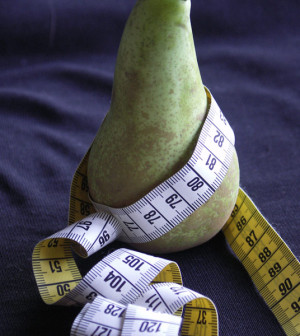- Big Health Care Disparities Persist Across the U.S., New Report Finds
- Teens Often Bullied Online About Their Weight: Study
- Work That Challenges Your Brain Helps You Stay Sharp With Age
- Urine Test Might Spot Head-and-Neck Cancers Early
- Many Seniors Are Overmedicated, But ChatGPT Might Prevent That
- Antipsychotics May Do Great Harm to People With Dementia: Report
- Two-Drug Combo Curbs Drinking for People Battling Severe Alcoholism
- Most Homeless Americans Are Battling Mental Illness
- FDA Recalls Heart Failure Devices Linked to Injuries and Deaths
- COVID Does Not Spur Asthma in Kids, Study Finds
Many Obese U.S. Kids Think They’re Thinner Than They Are


Many obese and overweight American children and teens look in the mirror and tell themselves their weight is fine, U.S. health officials reported Wednesday.
“Being overweight or obese is associated with adverse health outcomes, such as high blood pressure, high cholesterol and diabetes,” said lead researcher Neda Sarafrazi, a nutritional epidemiologist at the U.S. Centers for Disease Control and Prevention’s National Center for Health Statistics.
“Children who have a misperception of their weight are not going to take steps to control their weight or reduce their weight, and reduce the risk of future health complications,” she said. “If people perceive their weight accurately, they can start weight-control behavior.”
According to the CDC report, 34 percent of Hispanic-American children and teens believe they are thinner than they are, as do 34 percent of black kids and 28 percent of white kids.
In addition, about 81 percent of overweight boys and 71 percent of overweight girls think their weight is about right. Among obese boys, 48 percent think they’re at the right weight, as do 36 percent of obese girls, the researchers found.
There are also differences in weight perception based on family income. Obese and overweight kids and teens are more likely to consider themselves at about the right weight when they come from poorer homes than similar kids from richer homes (31 percent vs. 26 percent).
Overall, about 30 percent of kids and teens misperceive their weight as being too fat or too thin, according to the CDC. This misperception is more common among boys (32 percent) than girls (28 percent), the researchers added.
Samantha Heller, a senior clinical nutritionist at New York University Medical Center in New York City, noted that “weight perceptions are not as simple as asking how children view themselves at their current weight and comparing that with CDC weight definitions and categories.”
There are many factors that influence how children view themselves, including cultural and socioeconomic norms and the media, as well as peer and environmental influences, she said.
“We tread a fine line when we talk to children and adolescents about their weight. Of concern is creating disordered eating patterns among kids who are labeled as misperceiving their weight,” Heller said.
On one hand, seeing many overweight and obese children and adults has become the norm, Heller said. So it would seem reasonable that overweight children see themselves as being at a normal weight. On the other hand, the media and social influences create unrealistic ideal body types that both boys and girls strive to achieve, she said.
“We can help bring children and adolescents to appropriate weights by focusing on healthy foods, regular exercise and a positive self-image. Parents, educators and caregivers can make headway by becoming role models themselves and creating opportunities to support and enjoy healthy lifestyle choices and activities with children,” Heller said.
Dr. David Katz is director of the Yale University Prevention Research Center. He said: “There is well-established variation, over time and across cultures, in perceptions of ideal weight. But that variation is about appearance, not health.”
Unfortunately, obesity in children is a major cause of serious health problems, from type 2 diabetes to fatty liver disease, he noted.
“We need to fix this and raise awareness among all ethnic groups about the important health threats posed by childhood obesity. But we have to proceed with caution. We should empower people to take constructive action, not confront them with blame or impose any sense of shame,” Katz said.
Data for the report came from the National Health and Nutrition Examination Survey, 2005-2012.
Meanwhile, a recent report published in the journal Pediatrics found that the waist sizes of America’s kids and teens appear to have stopped spreading.
According to the University of Minnesota researchers who conducted that study, the proportion of children and teens aged 2 to 18 who were obese, based on waist size, held steady at nearly 18 percent from 2002 to 2012.
More information
Visit the U.S. Centers for Disease Control and Prevention for more on obesity and youth.
Source: HealthDay
Copyright © 2024 HealthDay. All rights reserved.










